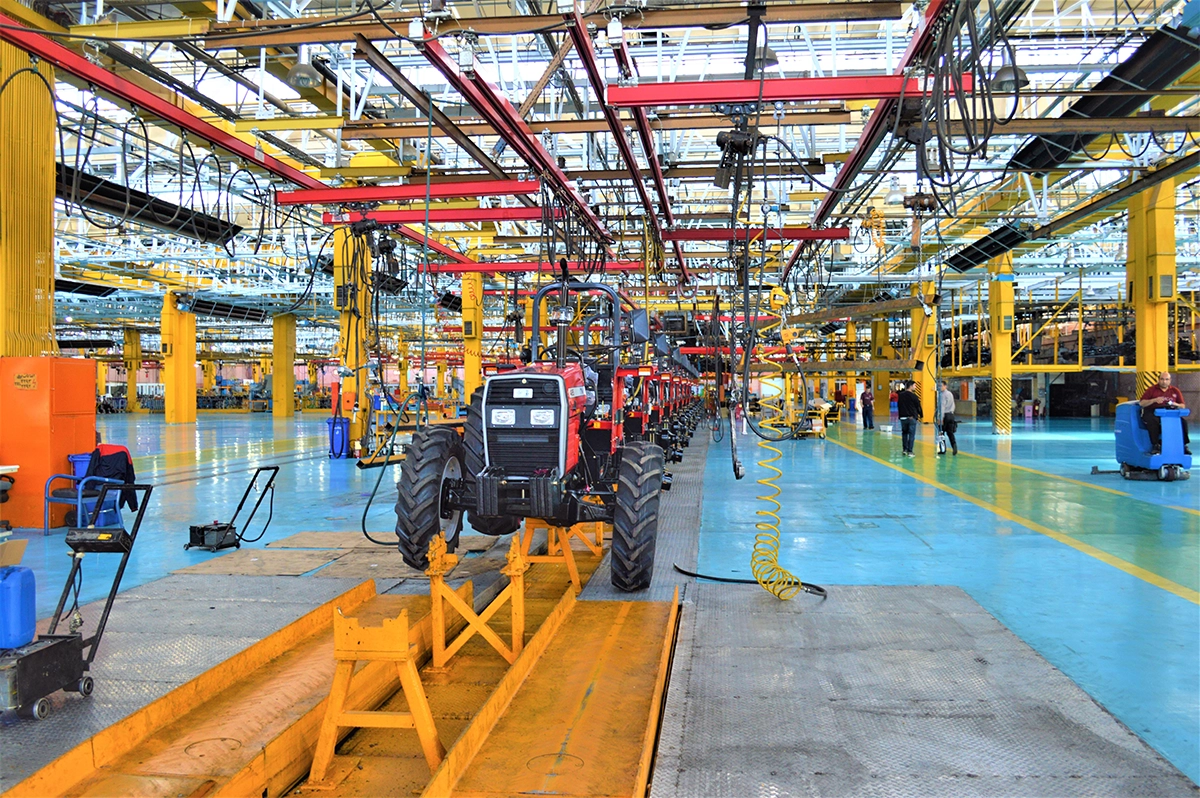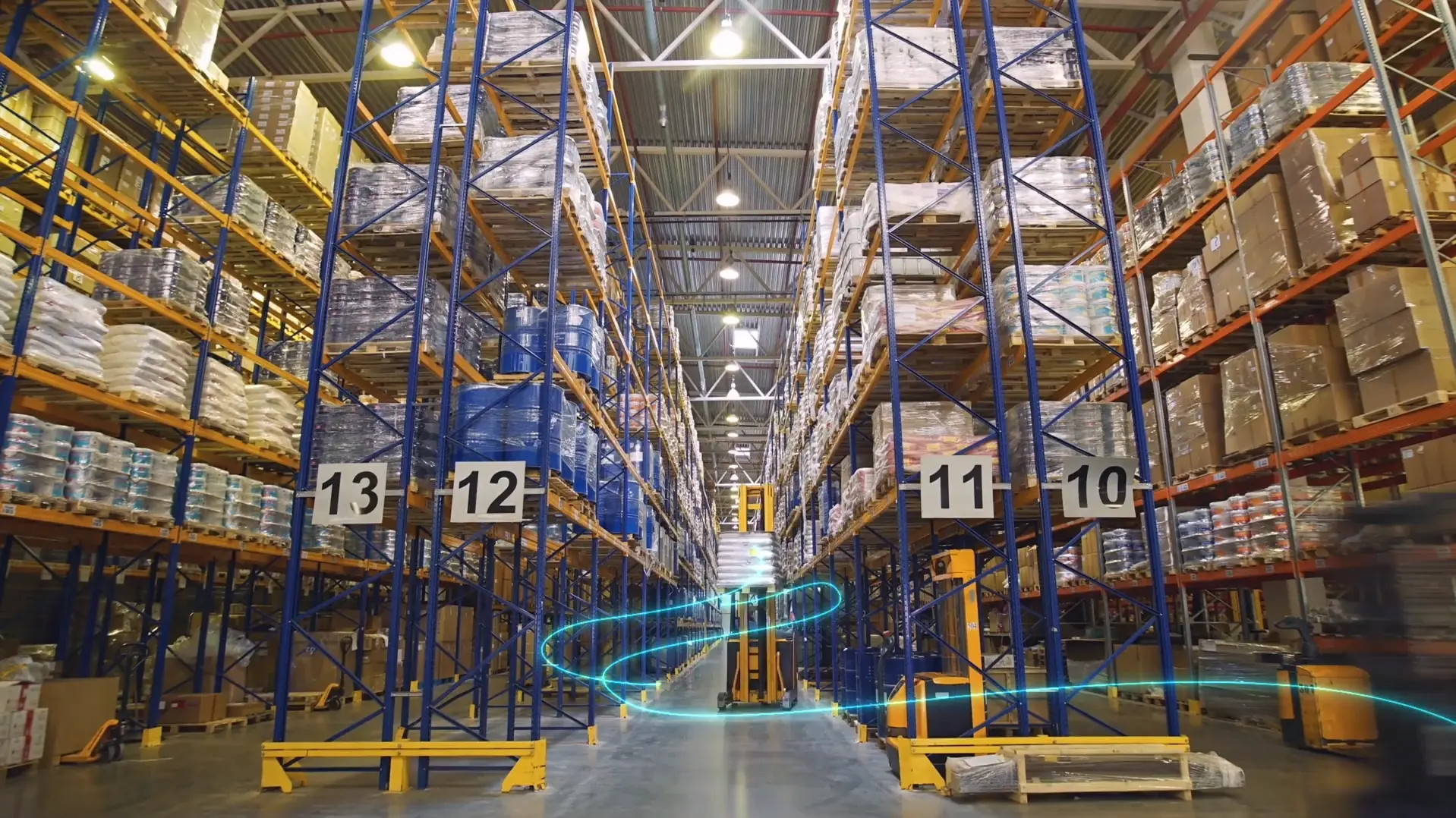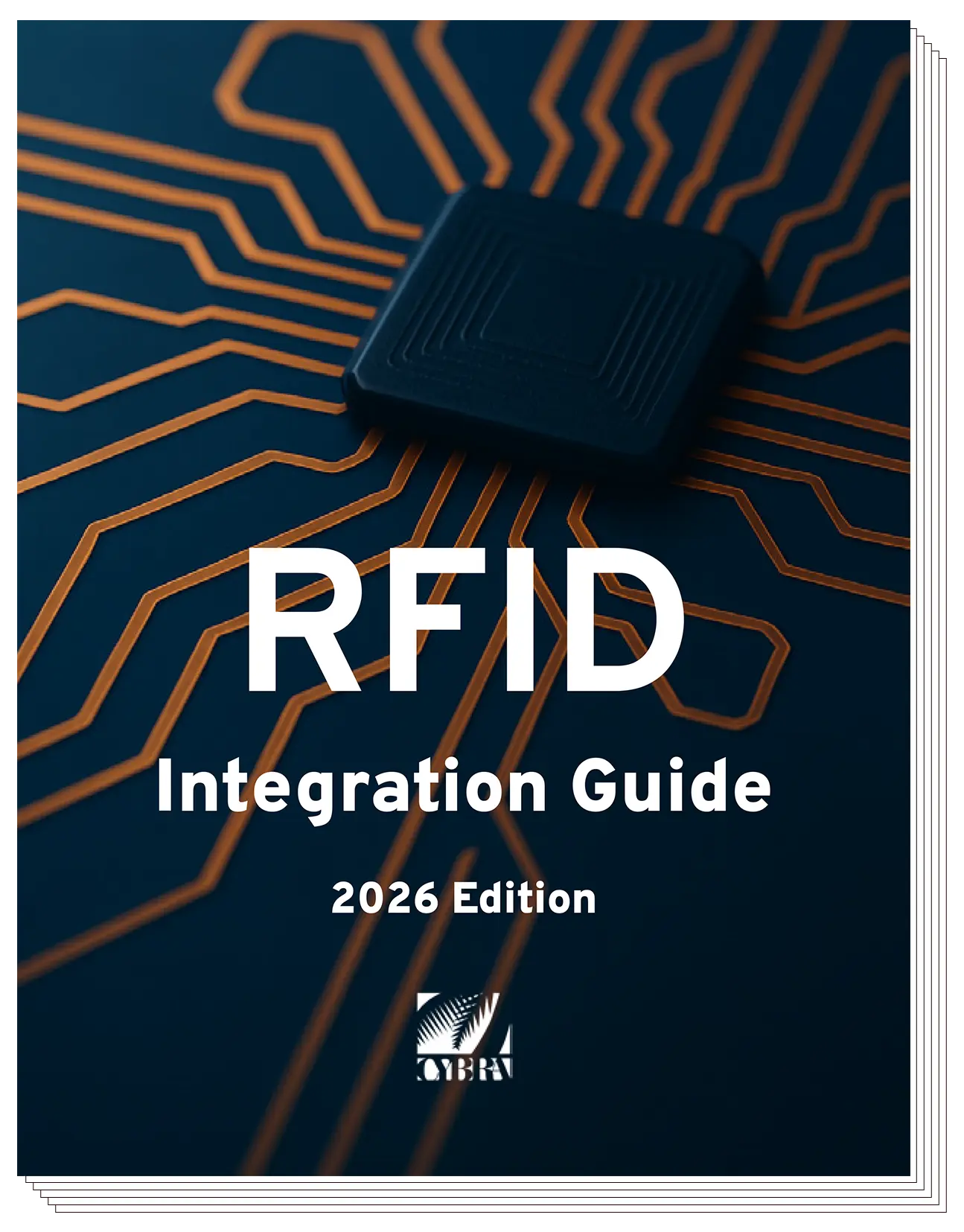
If you are looking into using RFID solutions like inventory management or equipment tracking you may be wondering – can RFID track location? RFID (radio frequency identification) technology can help organizations do so many amazing things. track the location of inventory, equipment and personnel. It can also help businesses prevent theft and shrinkage.
Unlike barcode scanning, RFID does not require line of sight or human intervention. Numerous processes that once had to be done manually can now be done automatically. This makes RFID a much faster and more efficient way to scan assets.
The Benefits of Adding RFID to a Supply Chain
RFID brings real, measurable advantages to any modern supply chain by replacing manual scanning and guesswork with fast, automated, location-aware data.
With RFID in place, organizations can automate routine tasks like counts, audits, and verifications, freeing staff to focus on higher-value work. Accuracy jumps dramatically as well: mis-picks, lost items, and paperwork mistakes drop because every read updates your system instantly. That means tighter inventory control, fewer disruptions, and stronger overall supply-chain performance.
RFID also makes your operation more resilient. Whether you’re tracking goods through a warehouse, tools across a production line, or staff within critical areas, the technology helps you ensure safety, maintain compliance, and enforce security policies.
The result is a supply chain that runs leaner, smarter, and with a level of precision that barcodes alone simply can’t deliver. Below are some specific ways in which RFID can positively impact an organization’s operations.
2026 RFID Integration Guide
[Free eBook] A complete guide that will help retail brand owners, manufacturers, and distributors reap great benefits from integrating RFID technology into their supply chain operations.
Inventory Management
RFID technology can be used to track the location of inventory throughout warehouses, retail stores, and other large environments. It can help reduce human errors in stock-taking, eliminate losses and stolen goods, and streamline inventory processes.
An RFID system works by placing tags on items, which can then be scanned by readers. These readers can be mounted on walls, ceilings, doors, and other surfaces.
When a tag is scanned by the reader, the system sends a signal to the tag, which then starts working. Depending on the type of reader, it can also communicate with a database to update the information in real time.
There are two main types of RFID readers. These include fixed and mobile (handheld) readers. Handheld devices are battery-powered and allow the user to update information in real time.
Equipment Tracking
If you run a rental hire company, or you’re moving large assets between locations, an RFID tracker can help you track their location in real time. This helps your teams ensure they’re checking in and out properly and prevents costly errors.
Equipment RFID Can Track
- Assembly Line Equipment
- Injection Molding Machines
- Printing and Packaging Machines
- Forklifts
- Pallet Jacks
- Conveyor Systems
- Personal Protective Equipment (PPE) Inventory
- Automated Guided Vehicles (AGVs)
- Servers and Networking Equipment
- Mobile Devices and Tablets
RFID technology also helps reduce labor costs by automating the inventory count and reducing the need for manual counting. This saves companies a lot of time and money on inventory management, and it’s often more accurate than manual inventory counts, too.
RFID is also useful for tracking the movement of small, expensive movable items, such as fax machines, laptops and office chairs. It’s a better alternative to barcode or GPS tracking systems for these types of assets because it’s more secure and doesn’t require scanning, which can be difficult in harsh weather conditions.
Monitoring Personnel Safety
Many businesses use RFID technology to track the location of personnel. This can be an excellent way to ensure security, reduce costs and improve productivity.
Traditional asset tracking by using barcode, engraved codes or serial numbers means that staff must find the tag (sometimes very difficult if covered in mud or dirt, under desks or behind heavy equipment), scan it and then physically input the tag into a tracking system. This process is time consuming and ineffective.
With a portable RFID reader that’s built into a mobile computer, staff can scan several items at once without having to locate or see the tags.
This can be a very useful tool in tracking employees who need to be mustered for an emergency or special event.
RFID systems are also ideal for a wide range of applications in warehouses and inventory management, including tracking the location of equipment and assets. This can help retailers avoid out-of-stock situations and minimize inventory loss.

Enforce Security Policies
Aside from keeping track of inventory, RFID technology also helps organizations identify people and monitor their location. They can detect people who stray away from their assigned locations and help prevent theft, shoplifting, or other problems.
In addition, RFID allows organizations to track assets like equipment and vehicles in the field and verify that they have been inspected. This information can be useful for insurance and regulatory requirements.
There are several different types of RFID tags, including beacon tags that periodically broadcast their location, and transponder tags that only transmit their information when queried by an active RFID reader.
Passive RFID badges, which have no onboard battery, are most common for personnel tracking. They are less expensive than active tags and can be used in places that do not require high-range readings, such as indoor facilities or areas with low ceilings.
Aside from the obvious security benefits, RFID can help companies improve productivity. It can save time and money by freeing up employees to focus on more important tasks. It can also reduce administrative error, and make it easier to comply with compliance regulations.
How to use RFID in Your Warehouse

How to Use RFID in Your Operations
RFID tags, readers, firmware, and transponders all work in concert with each other, but in order to organize and evaluate the data everything you will need some kind of RFID software application. Modern RFID software products include a frontend that allows user to visualize data with graphs, charts, and reports. For active RFID applications, some RFID software systems will show live data and real-time movement of inventory, equipment, or personnel. Your specific business needs will dictate what kind of RFID software you should work with. But once your hardware and software are set up in your environment you will start to see positive changes in your day-to-day operations – improved efficiency and less errors without slowing down your team.
Interested in RFID?
An RFID tracking system can help organizations of all sizes improve their supply chain efficiency. Contact the CYBRA team to schedule a demo today.
















